March 13, 2023
By Jay A. Tilden and Dallas Boyd
The note affixed to the metal box was chilling: “Do not move or tilt this bomb, because the mechanism controlling the detonators…will set it off at a movement of less than .01 of the open end Ricter [sic] scale.” Addressed to the management of Harvey’s Resort Hotel near Lake Tahoe, where men pretending to deliver a copy machine had placed the box on August 26, 1980, the message warned the bomb squad not to try to dismantle the device. “This bomb can never be dismantled or disarmed without causing an explosion. Not even by the creator.” In return for $3 million in cash, the extortionist promised to reveal the correct combination of toggle switches on the outside of the box that would allow it to be safely transported away from the casino.
Responding to the scene were bomb technicians from the FBI, the US military, and NEST—an obscure unit from the Department of Energy then known as the Nuclear Emergency Search Team. These incident responders were quickly struck by the sophistication of the device, easily the most complex homemade explosive ever encountered in the United States. The bomb’s designer, a Hungarian immigrant and World War II Luftwaffe pilot who later claimed to have lost $750,000 at the casino, had filled the box with close to a half-ton (450 kilograms) of dynamite. He also outfitted it with multiple independent triggers designed to detonate the bomb if an attempt were made to defuse it.
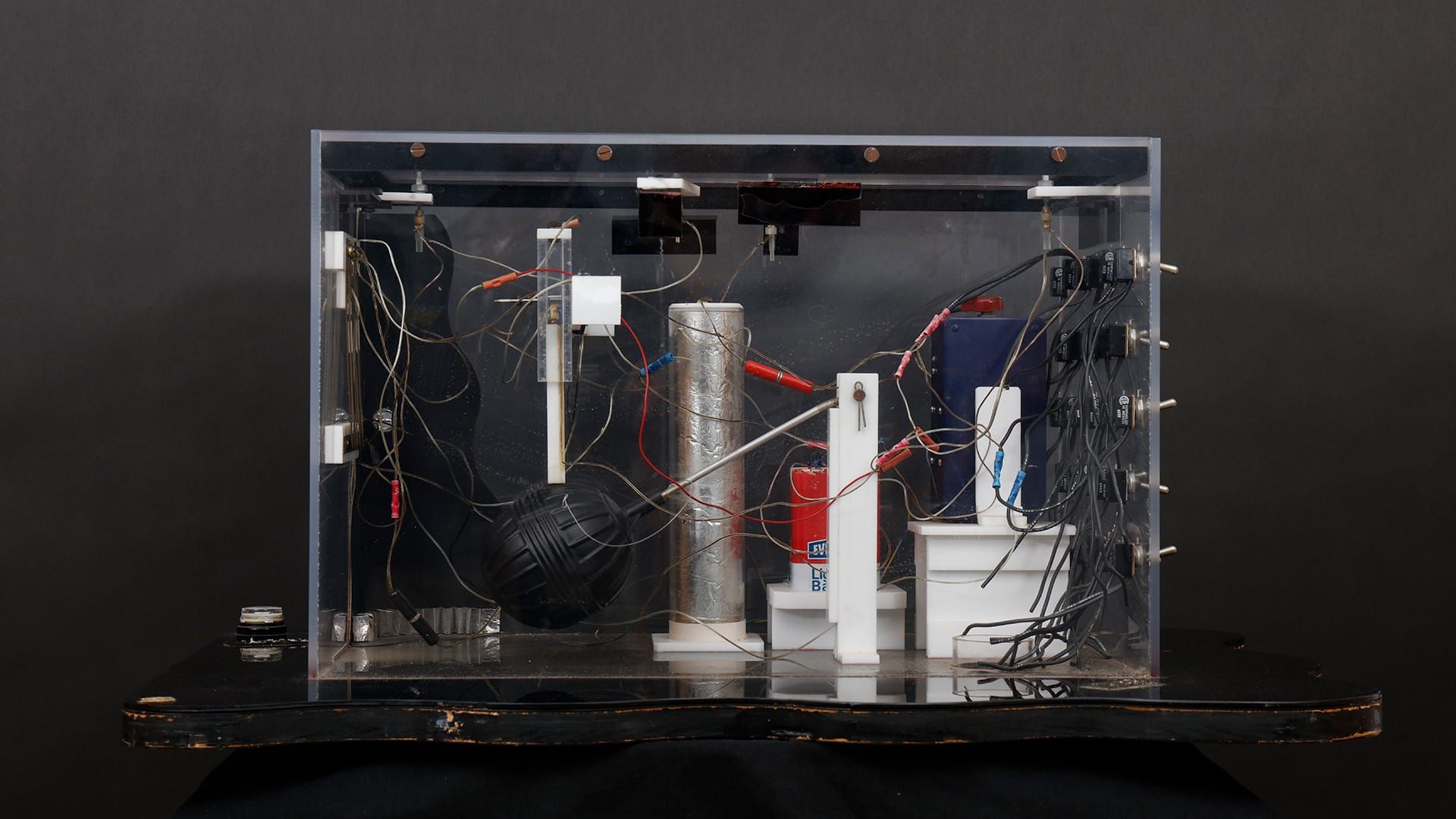
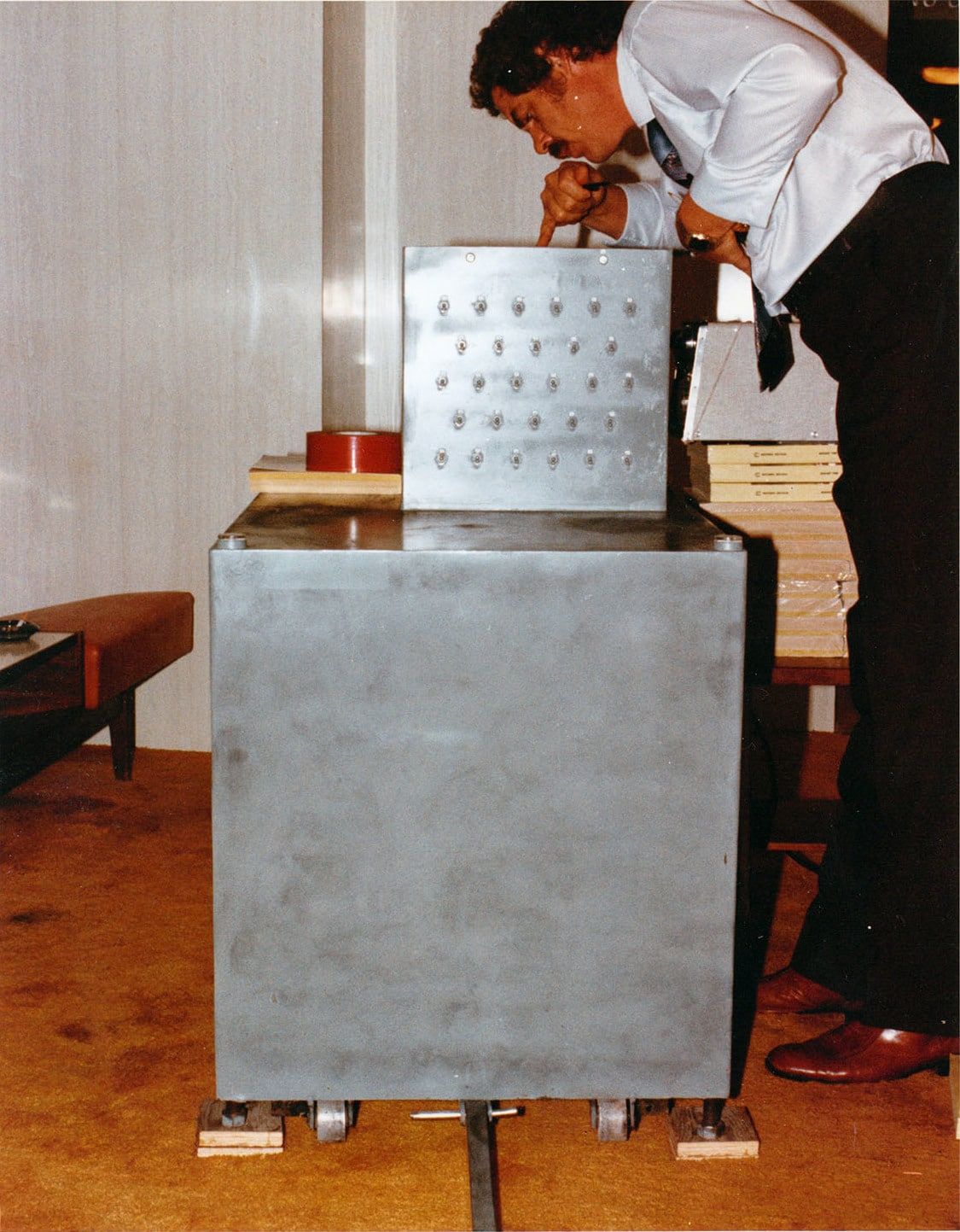
Studying the box for more than 30 hours, including the use of X-rays to assess its interior components, the team settled on the use of a precision C-4 explosive to “shear” the detonation circuit from the dynamite. If all went according to plan, the charge would separate the detonators from the bomb’s power source before its electrical current triggered an explosion. After evacuating the casino and surrounding buildings, the team detonated the charge by remote control. But when the tool fired, the concussion triggered one of the bomb’s many booby-traps, detonating the dynamite spectacularly and demolishing a large portion of the building.
The sophistication of the Harvey’s casino device, coupled with the inadequacy of the tools of that era to diagnose and disarm it, would prove to be a watershed event for the nation’s premiere bomb squads. While the device had featured conventional explosives, the imaginations of NEST’s leaders quickly leapt to the prospect of a makeshift nuclear device with similarly complex defenses. Encountering such a bomb in the United States had not yet been considered, but then the age of nuclear terrorism was then still in its infancy.
NEST’s Origins
NEST had been formed only a few years before the Harvey’s incident, following an attempted act of nuclear blackmail. In 1974, an extortionist had threatened to detonate a nuclear weapon in Boston unless given $200,000; the subsequent scramble to search for the bomb was a thoroughgoing debacle. Scientists and equipment arrived at different airports, and the team lacked tools as rudimentary as power drills to install the necessary radiation detectors in their hastily rented vans. President Gerald Ford, appalled by the shortcomings of the nation’s nuclear incident response posture, set in motion the creation of what would become NEST, to ensure that the government would not be caught flat-footed again.
After the 1974 event, Ernest Graves, head of military applications for the Atomic Energy Commission (a predecessor of the Department of Energy), sent a memorandum assigning to the organization’s Nevada Operations branch the responsibility for the “search and identification of lost or stolen nuclear weapons and special nuclear materials, nuclear bomb threats, and radiation dispersal threats.” Henceforth, the scientific knowledge of the US nuclear weapons laboratories would be harnessed to confront the threat of nuclear terrorism. So sensitive was the unit that three years would pass before Congress even learned of its formation. Jeffrey Richelson, the author of a book about NEST’s counter-weapons of mass destruction (WMD) mission, later observed, “If a similar organization did not exist in the real world, Hollywood probably would have created one.”
“ If a similar organization did not exist in the real world, Hollywood probably would have created one. ”
NEST is hardly a
convocation of
nerds
Creating NEST was not simply a matter of setting up a novel organization, however. In addition to nuclear extortion and terrorism threats, the group would eventually absorb a number of the Energy Department’s response units—which in some cases had existed for decades. As an umbrella entity, NEST would ultimately be responsible for responding to US nuclear weapon accidents, nuclear reactor emergencies, and other radiation contamination events. To perform these diverse missions an array of scientific disciplines was needed: spectroscopy, radiography, nuclear device assessment, atmospheric modeling, radiation dose assessment, and nuclear forensics, to name just a few.
Yet, for all its technical underpinnings the NEST of today is hardly a convocation of nerds, although these are in no short supply in the unit. Its ranks include former military personnel, pilots, and specialists in maintenance, logistics, and communications who ensure the unit’s worldwide reach, often in unforgiving conditions. Indeed, NEST’s motto—“Scientifically Informed, Operationally Focused”—reflects the marriage of the laboratory and the field, whether the latter is an urban center or a swath of contaminated countryside.
Although NEST is usually depicted in film as a shadowy unit complete with black helicopters and disguised personnel, the reality is at once more mundane and more impressive. NEST does conduct discreet operations and boasts capabilities that exist nowhere else in the government, but the team is fundamentally an advisory organ. Simply put, its purpose is to provide dispassionate scientific advice during fearful events, equipping decision-makers with the knowledge to save lives and recover quickly from disasters. As it happens, the need for this function long predates the concern over nuclear terrorism, first emerging in response to the accidents that began to occur soon after the awesome power of the atom was harnessed.
US nuclear weapon accident response
Accidents associated with the US nuclear weapons program transpired as early as the Manhattan Project. In one famous incident in 1946, scientists investigating the critical mass of plutonium performed a risky experiment in which two halves of a beryllium shell surrounding a plutonium “pit” were moved close together to measure the increased reaction rate. Physicist Louis Slotin used a screwdriver to keep the shells from completely closing, but one day the tool slipped, permitting the shells to fully close. The heightened reflectivity pushed the plutonium core toward criticality, exposing the scientists in the room to a burst of fast neutrons. Slotin, standing closest to the core, died an agonizing death nine days later.
Understanding the effects of radiation on the human body, a scientific field known as “health physics” would become a central element of NEST’s expertise, informing responses to a wide range of military and civilian nuclear mishaps. Other accidents would involve US nuclear weapons themselves. Referred to as “Broken Arrow” events, this category includes accidental nuclear launches, the non-nuclear detonation or burning of a nuclear weapon, and the jettisoning of a weapon in transit. More than 30 Broken Arrows occurred in the United States’ stockpile between the development of nuclear weapons in 1945 and the last such event in 1980. NEST’s Accident Response Group (ARG), made up of scientists with encyclopedic knowledge of nuclear devices, was closely involved in the response to most of them.
The last Broken Arrow was perhaps the most harrowing. It began near Damascus, Arkansas, on September 18, 1980, when an Air Force technician descended into a silo housing a Titan missile, atop which was a W-53 warhead with a yield of nine megatons. Equipped with a heavy socket wrench, the airman was tasked to secure a nitrogen line to the missile’s oxidizer tank. At one point the socket fell from his wrench, ricocheted off a thrust mount, and pierced the missile’s fuel tank, which immediately began spewing fuel. Early the next morning the fuel exploded, hurling the 740-ton silo lid away and propelling the warhead into a ditch 100 feet from the silo. Only the warhead’s safety mechanisms prevented a detonation 500 times more powerful than Hiroshima.
only the warhead’s safety mechanisms prevented a detonation 500 times more powerful than
Before the warhead could be safely removed, however, ARG scientists insisted on assessing its integrity. A military Explosive Ordnance Disposal team on the scene had dug a hole under the warhead, circled it with a chain, and planned to pull the weapon from the ditch. When told of ARG’s plan to X-ray the warhead, its commander barked: “These eggheads should just get out of the way and let us go to work.” Undeterred, the ARG scientists employed a rudimentary “pig”—a mass of cobalt-60 in a lead box on one side of the warhead and photographic film on the other—to evaluate the weapon. Using a cord to open the box from a distance, the ARG team X-rayed the warhead and confirmed it was safe to move.
only the warhead’s safety mechanisms prevented a detonation 500 times more powerful than HIROSHIMA.
Most Broken Arrow events had finite resolutions, but a handful continue to torment the government. One notable incident occurred off the coast of Georgia in 1958 when an F-86 fighter collided in mid-air with a B-47 bomber, onboard which was a Mark 15 thermonuclear bomb. Fearful the weapon would detonate in an emergency landing, the crew jettisoned it into the sea near Tybee Island. After a nine-week search the bomb was declared “irretrievably lost,” and a subsequent Department of Energy analysis concluded that even if the weapon had survived intact, it was now resting 5 to 15 feet beneath the seabed and poses “no current or future possibility of a nuclear explosion.” Nonetheless, searchers periodically announce the bomb’s discovery, prompting fresh mobilizations of government search teams. Most recently, in 2015 a private citizen reported anomalous sonar readings where the weapon is thought to have landed. As part of the aptly named Operation Sleeping Dog, NEST advised military divers in their search, which, like others before it, failed to locate the elusive bomb.
While NEST deployments are often furtive, attract little attention, and end unremarkably, the unit is occasionally at the center of high-profile events. Notwithstanding its association with nuclear weapons and counterterrorism, both shrouded in secrecy, NEST’s mandate encompasses a much broader range of threats to public safety. During many of the most visible and frightening nuclear disasters in recent decades, the decisions made to protect the public have borne NEST’s unique scientific imprint.
Protecting public health and safety
Often mentioned in the same breath as Chernobyl and Fukushima, the 1979 partial meltdown of the Three Mile Island nuclear reactor in Pennsylvania remains the most serious commercial nuclear accident in US history. The malfunction occurred at 4 a.m., and by mid-afternoon a NEST Aerial Measuring System helicopter carrying radiation detection equipment was flying around the plant. Not long into the flight, scientists aboard knew they had located the radioactive plume from the plant when the needles on their instruments pegged to the limit.
Complementing the aerial surveys were ground teams from Brookhaven National Laboratory, which fanned out to take air, soil, plant, and water samples. The Brookhaven contingent came armed with a recently developed air sampler to measure airborne radioiodine under emergency conditions. Powered by a 12-volt vehicle battery, the sampler could determine in seconds whether there was a danger to public health. To the team’s relief, no significant radioiodine was detected.
NEST’s
scientific capabilities demonstrably saved American lives
NEST’s scientific capabilities demonstrably saved American lives
Late in the evening on the day of the accident the Energy Department team briefed Pennsylvania’s governor. By then the totality of the department’s data helped convince state and federal leaders that the risk to the public was low, which in turn persuaded them not to order a general evacuation. Mass evacuations are inherently chaotic, and deaths almost always occur from traffic accidents, displacing the sick and elderly, and the like. Here was a case in which NEST’s scientific capabilities demonstrably saved American lives.
More than 30 years later, when a tsunami caused the Fukushima disaster in 2011, NEST experts in atmospheric modeling, aerial measuring, and health physics quickly departed for Japan. These personnel would provide the earliest and most comprehensive information on the extent of the radiation release to the American Embassy, US military commanders, and the Japanese government. Because the distance to Japan exceeded the reach of NEST’s aircraft, aerial radiation measuring equipment was installed on US military aircraft in Japan, whose pilots were instructed on the particulars of aerial measuring. NEST estimates of possible radiation doses were then used to inform decisions by Japanese authorities and protective action planning for US citizens in Japan.
Although the most acute radioactive hazards emanate from nuclear weapons or commercial reactors, the diversity of nuclear applications ensures a similarly varied range of NEST deployments. The use of nuclear energy in space, for instance, has obvious advantages for powering long-duration missions but can present terrestrial dangers if things go awry.
During the Cold War, the Soviet Union used a class of low-orbit satellites known as RORSATS for naval reconnaissance that were powered by small nuclear reactors. The satellites were designed to rise in orbit at the end of their service life and disgorge their reactor cores into a “disposal orbit,” where they would pose no threat to life on Earth. One such RORSAT, Kosmos 954, was launched in September 1977, and its irregular orbital behavior soon alarmed US trackers. After its attitude control system failed in January of the following year, the satellite began a terminal descent. Even more troubling, the system to jettison the reactor malfunctioned. With a reactor core containing 50 kilograms (kg) of highly enriched uranium and plutonium, cesium, and strontium fission products, an uncontrolled reentry presented the prospect of a widespread dispersal of this deadly material on the ground. Enter NEST, the key player in the interagency response known as Operation Morning Light.
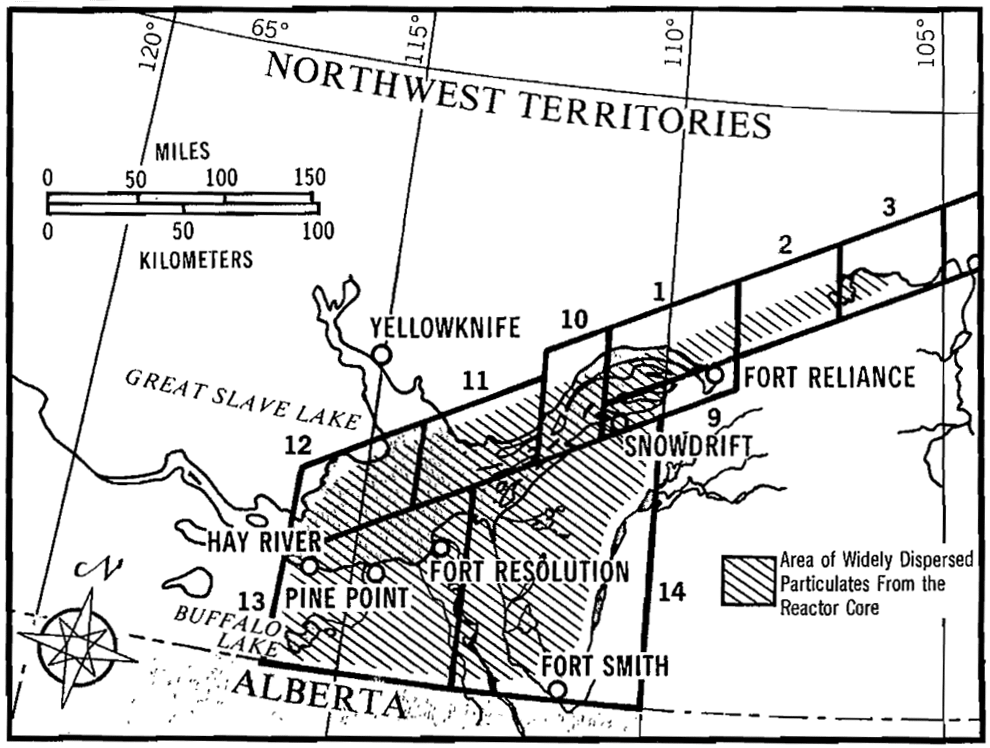
When Kosmos 954 finally made landfall on January 24, 1978, in Canada’s remote Northwest Territories, Prime Minister Pierre Trudeau accepted the United States’ offer of assistance, and President Jimmy Carter dispatched NEST scientists and equipment to locate the radioactive debris. The search ultimately covered 15,000 square miles, an area roughly the size of Switzerland. A crucial asset in narrowing the search area was access to knowledge of satellite reentry phenomena and computer codes that modeled reentry problems, as well as the national laboratories’ ability to aggregate wind patterns and other meteorological data, both of which improved the accuracy of the search.
The joint US-Canadian operation, conducted from the air and on foot in merciless cold, lasted nine months. Among the hundreds of pieces of the satellite recovered were several large fragments emitting lethal levels of radioactivity. The scale of the effort made it impossible to perform discreetly, and communication to the public and the media about the threat became a central part of the operation. This messaging campaign involved the renderings of in-house graphics designers trained to convey complex information to non-technical audiences, a function NEST continues to perform today.
NEST has been deeply involved in the response to Russia’s invasion of Ukraine
The use of nuclear fuel remains common in space missions, and NEST is involved in preparing for any mishaps that may endanger the public. As part of the Mars Exploration Program, in 2020 NASA launched the Perseverance rover, which was powered by a radioisotope thermoelectric generator—a nuclear battery the size of a dishwasher containing almost 5 kg of plutonium. During the launch, dozens of NEST personnel were on hand at Cape Canaveral, deployed in field monitoring units, or serving on a “Home Team” at Lawrence Livermore National Laboratory. Receiving measurements from air monitors distributed over 40 miles around the launch site, the scientists were poised to perform plume simulations in the event of a plutonium release during the launch, providing the technical basis for responses to protect public safety. Like most NEST deployments, no such emergency occurred, and local residents were none the wiser about the preparations that had been made for a worst-case scenario.
More recently, NEST has been deeply involved in the response to Russia’s invasion of Ukraine. Technical personnel have continuously monitored radiation sensors around Ukrainian nuclear facilities and performed modeling of various accident scenarios involving the country’s nuclear power plants. Should a radiation release from a Ukrainian nuclear facility occur, these analyses would be provided to Ukrainian authorities and other partners in the region to make scientifically informed decisions to protect public safety.
Although these activities attest to the breadth of NEST’s portfolio, for better or worse the mission the unit is most closely associated with remains its most ominous. Hollywood has yet to depict a room full of health physicists earnestly comparing dose estimates, but scenes of NEST teams in pursuit of nuclear terrorists are not infrequent. However far removed from reality these depictions may be, they appeal to society’s expectation that it is not defenseless against nuclear-armed maniacs and that highly trained professionals do exist to stop them. And while the likelihood of an act of nuclear terrorism is probably much lower than the movies would suggest, ample evidence suggests the threat is far from abstract.
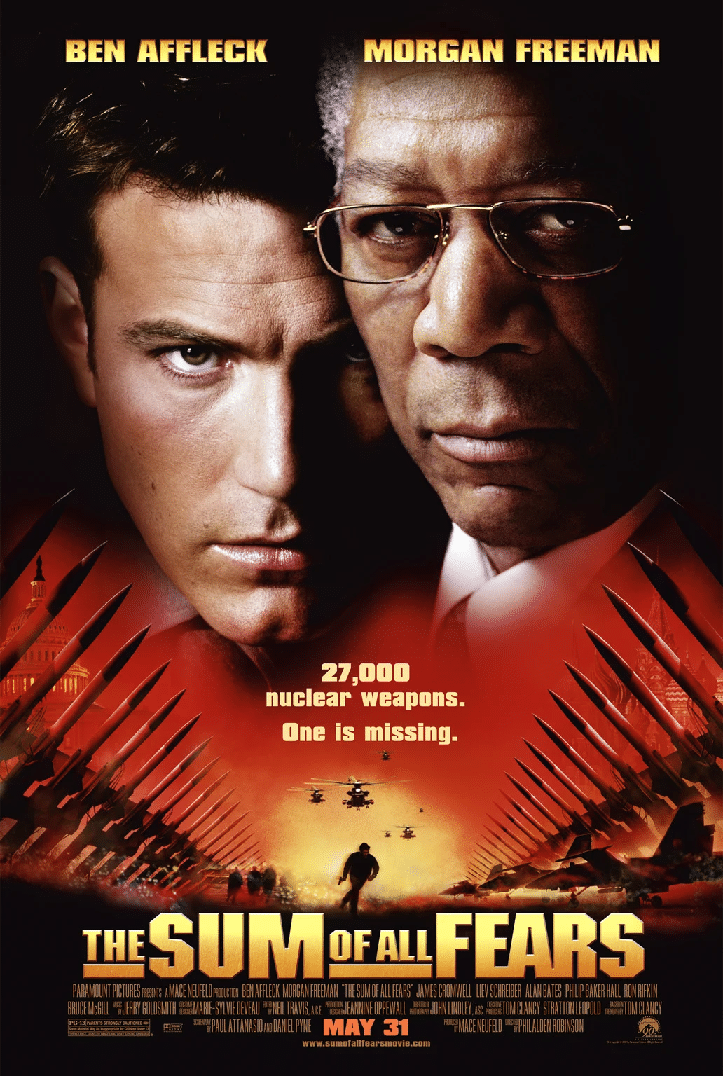
Countering nuclear terrorism
By the 1970s, US scientists had concluded that terrorists were theoretically capable of building a nuclear device if they possessed the requisite quantity of nuclear material. As a 1977 RAND report concluded, “The notion that someone outside of government programs can design and build a crude nuclear bomb is a good deal more plausible now.” Even before this assessment, the possibility of nuclear terrorism had already penetrated the public’s consciousness, and nuclear hoaxes and blackmail attempts soon became all too common.
In 1975, with the memory of the Boston fiasco still fresh, another nuclear extortion attempt occurred. This time the perpetrator demanded $30 million in return for not detonating a nuclear bomb hidden in New York City. What got the investigators’ attention was the drawing that accompanied the letter, later described as “obviously made by someone who had more than a passing acquaintance with nuclear physics.” Such technical judgments by the team’s scientists would again and again help distinguish genuinely worrisome nuclear threats from unserious ones. Fearing this instance represented the former, the FBI placed a phony ransom at the drop site, but the extortionist never appeared and made no further communications.
In some cases, analysis might be outsourced to experts in fields relevant to an investigation. This need arose in 1979, when the manager of a General Electric nuclear plant in North Carolina opened a letter left outside his office along with a vial containing an unknown substance. The writer claimed to possess more than 66 kg of low-enriched uranium stolen from the plant and outlined a plan to deliver additional vials to anti-nuclear groups and the media unless a ransom of $100,000 was paid.
After the plant confirmed the loss of the uranium, the FBI sent the letter to Murray Miron, a psycholinguistics expert at Syracuse University, who worked in parallel with NEST scientists to develop a profile of the individual. These analyses correctly inferred that the perpetrator was not technically trained and was likely employed at the facility from which the material was stolen. After narrowing the list of suspects, a plant employee was soon arrested and directed the authorities to the stolen cans of uranium in a nearby field.
Although the New York and North Carolina extortion plots ended anticlimactically, the US government had by then internalized the fact that non-state nuclear threats were here to stay. Furthermore, the Harvey’s casino bomb in 1980 underscored that if responders encountered a sophisticated nuclear device, the challenge of disarming it would outstrip their capabilities at the time, with potentially catastrophic results. This recognition motivated wholesale improvements in NEST’s tool kit in the early years of the organization, such as adding advanced imaging equipment to diagnose the guts of a mystery bomb as well as improvements in a wide range of precision disablement technologies.
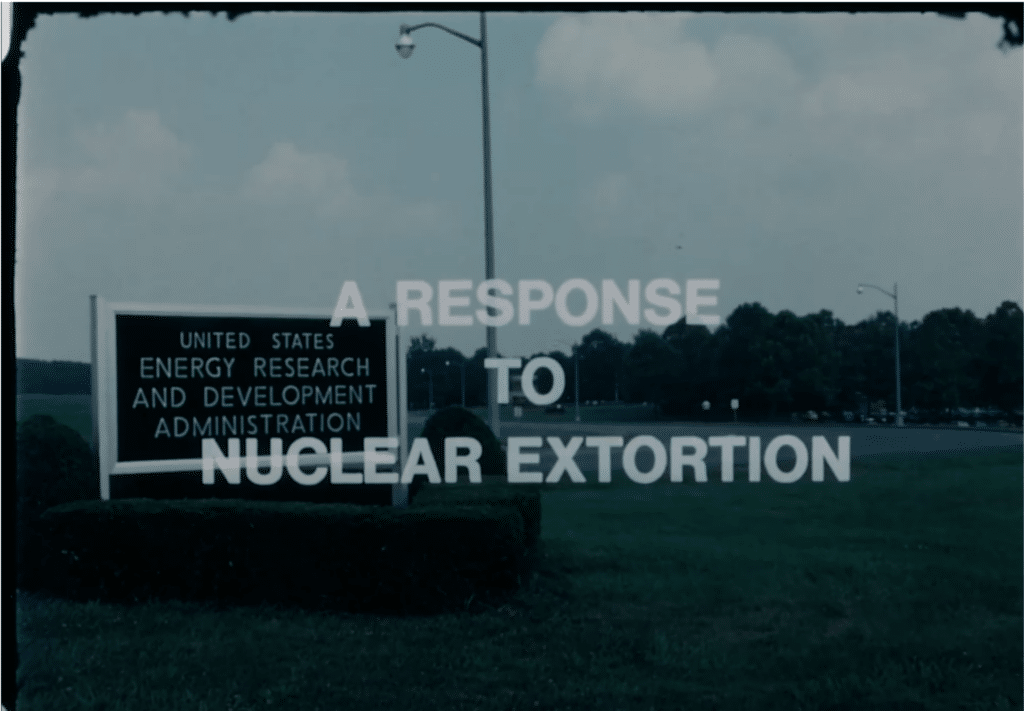
An early NEST film presents the state of the art in 1976. (NNSA via Gizmodo)
A crucial advantage that NEST brings to an incident is the ability to muster weapons experts at the national laboratories to diagnose a potential nuclear device remotely in real-time. In the unit’s infancy, field personnel could attach slow-scan fax machines to pay phones or regular telephones to send a device design to Energy Department’s facility in Germantown, Maryland, from which it would be relayed to the laboratories. Today NEST teams use sophisticated equipment to capture the makeup of a device and instantly transmit images on classified communications systems to the labs. There experts provide guidance on the optimal course of action to “defeat” the device, a term of art covering everything from defusing the weapon to blowing it apart with explosive charges.
A key element of the NEST assessment process is the identification of anti-tamper mechanisms, or “penalties,” that will cause a device to detonate if an attempt is made to disarm it. As Jack Doyle, an early NEST technical director, ruefully noted, “Any group of terrorists smart enough to build a [nuclear] bomb is going to be smart enough to protect it.” Consequently, NEST, FBI, and Department of Defense personnel regularly conduct “blind challenges,” often with counterparts from foreign governments, to practice techniques to defeat a mock device bristling with devilish penalties.
A seminal event for the US nuclear counterterrorism community occurred in 1994, when a vast field exercise named “Mirage Gold” was held in New Orleans involving more than 800 personnel from NEST, the FBI, the Defense Department, and other federal agencies. The purpose of the drill was to test the interagency response to a nuclear terrorism scenario, in this case a domestic extremist group in possession of an improvised nuclear device. (Indeed, NEST would not be in operational command of such a response but would instead be one of several agencies involved.) Complete with raids on fictitious safe houses, interrogation of informants, and analysis of captured documents, the exercise was designed to cover the full gamut of a response to a terrorist nuclear threat.
Based on FBI intelligence gleaned during a safe house raid, a mobile NEST unit detected a mock nuclear device in a shed at a local airstrip. After securing the building, NEST scientists and military bomb techs devised a plan to defeat the device, but not before encasing it in a cone filled with foam to capture radioactive debris. FBI information also led responders to a second nuclear device within a vessel anchored on nearby Lake Michoud, which was also disarmed. To the uninitiated, the outcome of the exercise might have appeared successful, but subsequent analysis revealed a raft of technical and conceptual pitfalls.
Operational shortcomings included the failure to recognize drawings of one of the bomb’s firing systems that were discovered in the safe house, which could have been critical in disabling the device. Of deeper significance was the omission of any state or local law enforcement agencies from the drill. Most damning, however, was the assertion of the Energy Department official in charge—Charles J. Beers—that Mirage Gold had been run to “stack the deck” and achieve “unrealistic success,” including by artificially prepositioning NEST assets and leaking the fake nuclear bomb’s location, source type, and other information.
“ Any group of terrorists smart enough to build a [nuclear] bomb is going to be smart enough to protect it. ”

In the interagency bloodletting that followed, a wide range of reforms was adopted. In particular, coordination between the agencies that would respond to a nuclear incident improved. This occurred not only on paper in the policies that prescribe response operations but also in practice during the joint exercises that simulate nuclear events. The result was the structure that would be in place on September 11, 2001, after which the threat of nuclear terrorism suddenly appeared not just plausible but imminent.
At the center of the affair, naturally, was NEST
Shortly after the terrorist attacks, the White House received intelligence that an even more horrific plot could be in the works. In October, the CIA informed President George W. Bush that a source codenamed “Dragonfire” had reported terrorists might have obtained a nuclear weapon from the former Soviet Union, and it was possibly headed to New York City. This sobering news set in motion Radiant Angel, an interagency operation to locate and disable the weapon. Although the episode remains obscure, what little reporting has been done suggests that after weeks of fruitless searching the CIA learned its initial report was incorrect, and the mission was called off. In fact, declassified details of the operation reveal that Radiant Angel stretched out for almost four years. At the center of the affair, naturally, was NEST.
In its initial phase, the joint FBI-NEST search was a 24/7 operation involving inconspicuous search vehicles known as K-Vans. Most were outfitted with sodium iodide radiation detectors and helium-3-based neutron detectors. When readings on either system exceeded a certain threshold, a van equipped with a more precise germanium gamma spectrometer would be summoned. The spectral measurements data from the screening van would then be sent to the national laboratories for adjudication.
For the most part, the operation consisted of monotonous grid pattern searches around potential areas of interest. Stephen Musolino, a member of NEST’s Radiological Assistance Program at Brookhaven, was one of the operation’s early “targeteers,” who identified locations on the Internet using their own intuition. Self-storage units, warehouses, and shipping companies were obvious choices, and the list of targets eventually numbered more than 900, covering much of New York City. “We ate the elephant in small bites,” Musolino recalled. When the searchers reached the end of the target list, they would simply start over again.
No genuinely worrisome reading was ever taken, and the operation’s footprint eventually dwindled. However, its four-year duration reflected the lingering anxiety about nuclear terrorism at the highest levels of the government. Around this time, NEST’s name was formally changed, with “Support” replacing “Search” to reflect the unit’s role as a technical advisory group. Rechristened the Nuclear Emergency Support Team, NEST would be a central player in responding to a handful of nuclear scares that occurred in the years following Radiant Angel.
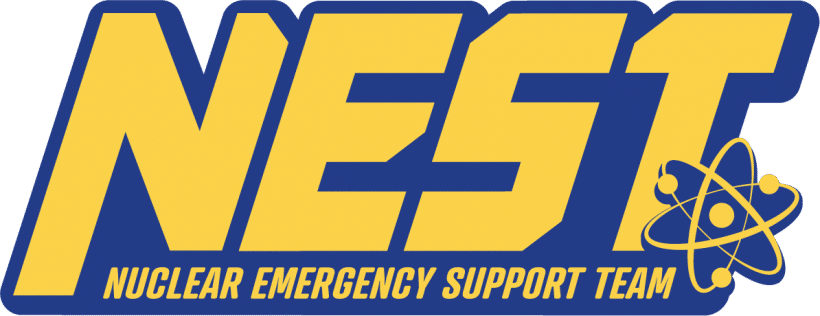
And these did occur, despite the little amount of press they received. For example, in late 2005 US officials learned that the alarm of a radiation detector had gone off in a port in Sri Lanka, one of many major seaports where the United States had installed portal monitors after 9/11 to scan for radiation in shipping containers. In this case, the reading showed the neutron count in a container going up and the gamma count going down, a signature consistent with either a plutonium-based nuclear weapon that had been “shielded” to avoid detection or something as benign as a commercial Americium-Beryllium, or “AmBe,” neutron source. Before the alarm could be adjudicated, however, the container had been loaded onto one of as many as six ships and already left port.
From the get-go, the most likely culprit was a container full of scrap metal bound for Mumbai. But after being alerted to the alarm, Indian authorities claimed to have inspected the container and declared it clean. This left several additional vessels to locate and search, two of them bound for New York. A National Security Council task force quickly took shape, and the full resources of the US government were mobilized, including the use of satellites to locate the ships at sea.
David Hoagland was four years removed from the Navy SEALs and working as a NEST contractor when he was given responsibility for coordinating the searches of the identified vessels. Within days, a NEST team was dispatched to Europe and boarded one of the ships before it reached Hamburg; two others intercepted the US-bound ships off the East Coast. The boarders carried radiation detection equipment and other tools to locate a hidden nuclear device, but all the searches came up empty. “Somewhat counterintuitively, there was no sigh of relief,” Hoagland recalled. “That meant the source was still out there.”
“ Nerds in polo shirts, not scary moon suits ”
From the start, US officials had been skeptical of the Indians’ certification of the container in Mumbai and persuaded them to re-inspect it. Using more suitable equipment, they finally discovered the source of the alarm: a disused AmBe source used for commercial purposes, such as mapping underground boreholes. Although not without its frustrations, this outcome proved that the system, ad hoc though it was, essentially worked. The efficiency and unobtrusiveness of the NEST search teams was a particular source of validation. For obvious reasons, the Coast Guard did not disclose the reason for inspecting the US-bound ships, and the NEST personnel who boarded them were purposely unintimidating. “Nerds in polo shirts, not scary moon suits,” as Hoagland put it. Long a hallmark of their deployments, inconspicuous presentation would help NEST blend in during the many searches they conducted in the United States after 9/11.
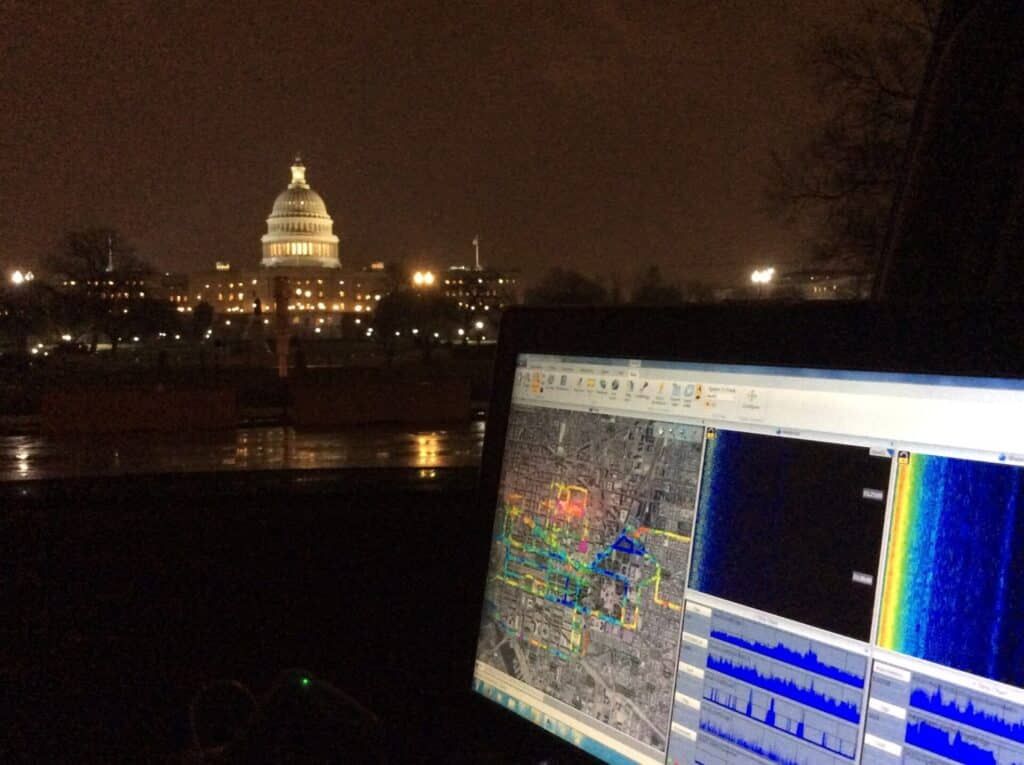
NEST radiation detection personnel dressed to be anonymous, and their gear evolves with the times. In the early years they carried radiation monitors disguised as briefcases or lunch bags and received data via earpieces. Today a searcher would appear as just another pedestrian wearing a backpack and staring mindlessly at her phone. During the dozen or so operations that NEST conducts each year to protect major public events—the Super Bowl, Presidential Inauguration, and Macy’s Thanksgiving Day Parade are typical deployments—NEST searchers move unseen through the crowd as they scan for radiation.
These missions often begin with aerial surveys conducted by NEST’s Aerial Measuring System helicopters. Flying in grid patterns at 150 feet above the host city, the aircraft take measurements of expected background radiation in the weeks prior to the event, capturing both naturally occurring radiation and sources such as medical isotopes in health care facilities. With this data in hand, if ground teams detect a radiation anomaly on the day of the event, NEST and its partner agencies can determine if the reading is suggestive of a genuine nuclear threat and respond accordingly.
Finding a nuclear weapon within a large, undefined space is another kettle of fish
Searching for radiation in a confined area is relatively straightforward. But finding a nuclear weapon or illicit material within a large, undefined space is another kettle of fish. Nonetheless, the US government has refined wide-area nuclear search capabilities for more than 50 years. In a 1970 proof of concept of sorts, aerial assets were used to locate the nose cone of a ballistic missile that was launched from Utah and inadvertently ended up in Mexico. The nose cone was laden with radioactive cobalt 57, and the subsequent search for the object—conducted at an altitude of 300 feet, flying at 200 miles per hour—was surprisingly successful. This led scientists to wonder if aerial capabilities could be used to search for a terrorist nuclear weapon.
Today NEST is equipped with specialized equipment to search for nuclear materials or devices based on a host of signatures. These capabilities, fielded jointly with NEST’s federal mission partners, were highlighted in the National Strategy for Countering Weapons of Mass Destruction Terrorism issued by the White House in 2018, which noted the existence of “highly mobile, responsive counter-WMD teams that can search for dangerous materials over wide areas based on a variety of threat intelligence.” Locating and interdicting a nuclear device does not signify the end of an operation, however. The “defeat” of the weapon is perhaps the most technically demanding, and unforgiving, phase of the mission.
From the earliest days of the nuclear incident response mission, US leaders were tormented by what they termed the “time-distance” challenge—the difficulty of transporting response teams across significant distances quickly enough to defeat a nuclear device. After exploring a basing model with teams on both coasts, in 2005 the government opted to position assets in multiple cities throughout the country to improve the early stages of a response. Enabling this decision was the advent of specialized technology known as “Stabilization,” which was designed to delay the functioning of a nuclear device for as long as it took for the cavalry to arrive. Complementing this tool was a suite of advanced diagnostic equipment that would allow the newly formed Stabilization, or “Level 5,” teams to better understand the inner workings of a device and provide this information to technical experts at the labs.
By 2018 the maturation of technology had again enabled a new paradigm. Advances in commercial capabilities gave federal leaders confidence that the regional Stabilization teams could be trained to use new tools, with real-time “reachback” guidance from the technical community, to defeat nuclear devices. As part of an initiative dubbed “Capability Forward,” NEST now trains and equips regional FBI teams in more than a dozen US cities in the use of this enhanced tool kit of device defeat methods. This posture is designed to significantly accelerate the response to a nuclear or radiological threat and save large numbers of lives.
An enduring threat
Throughout NEST’s history its focus has periodically shifted in response to a series of inflection points. Nuclear accidents and other public health hazards have at times eclipsed the more sinister contingencies the unit was first established to confront. Recent developments have rekindled concerns about the homegrown danger that so alarmed US leaders almost 50 years ago. The January 6 insurrection in particular led several commentators to recall the longstanding interest in nuclear terrorism among some American radical groups.
Although the facilities that house US nuclear weapons and materials are among the most elaborately guarded structures in the world, no system is infallible. NEST’s ability to search for and neutralize illicit nuclear material in concert with law enforcement is truly a last line of defense against nuclear terrorism, whether foreign or domestic. The unit’s indispensable role has been documented in a series of assessments of the US incident response posture over the years. A 1996 review by the Senate Governmental Affairs Committee concluded that “NEST is clearly a national asset which could not be duplicated by other organizations because of the unique scientific capabilities and field operational experience of the nuclear weapons laboratories that directly support it with volunteers and R&D.”
An annual budget roughly equivalent to what the Pentagon spends on ballistic missile defense in a week
This laboratory cadre model ensures a lean, cost-effective staffing profile. Indeed, most team members are not full-time NEST employees but national laboratory volunteers who serve on “watch bills,” ready to be activated day or night in response to nuclear events. As a result, NEST as a contingency defense comes at a relative bargain, with an annual budget of only $260 million. In comparison to another nuclear line of defense, this figure is roughly equivalent to what the Pentagon spends on ballistic missile defense in a week.
The satirical web site The Onion once lampooned the notion that highly competent government personnel work in the shadows to protect the American people from danger. Entitled “Smart, Qualified People Behind the Scenes Keeping America Safe: ‘We Don’t Exist,’” the article began: “Members of the brilliant, highly trained, and dedicated team of elite professionals who work tirelessly behind the scenes to protect our nation and keep its citizens out of harm’s way announced Tuesday that they do not exist.”
Members of NEST have circulated the Onion article to one another for years with amusement. Earnest professionals all, they are perfectly content to work unseen and unrecognized, with the quiet pride that they do in fact exist, and both the country and the world are safer for it.
As the Russian invasion of Ukraine shows, nuclear threats are real, present, and dangerous
The Bulletin elevates expert voices above the noise. But as an independent, nonprofit media organization, our operations depend on the support of readers like you. Help us continue to deliver quality journalism that holds leaders accountable. Your support of our work at any level is important. In return, we promise our coverage will be understandable, influential, vigilant, solution-oriented, and fair-minded. Together we can make a difference.

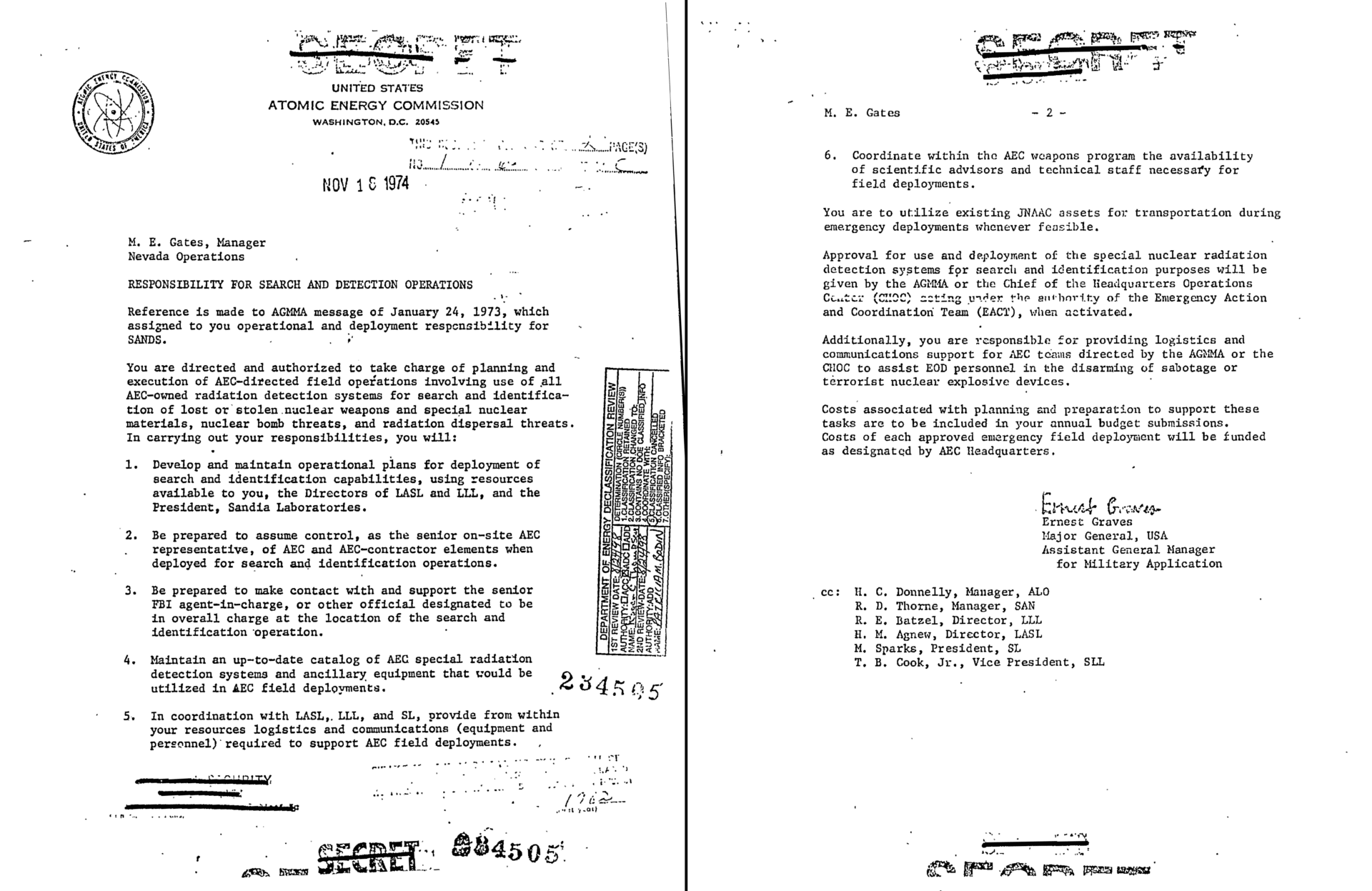

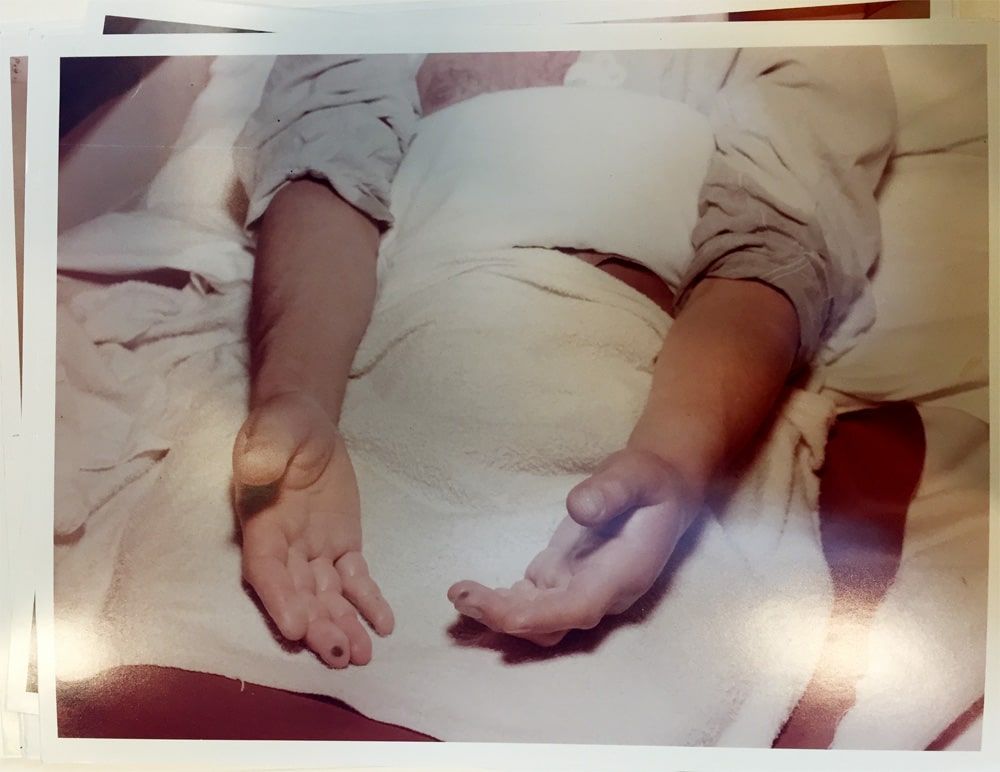

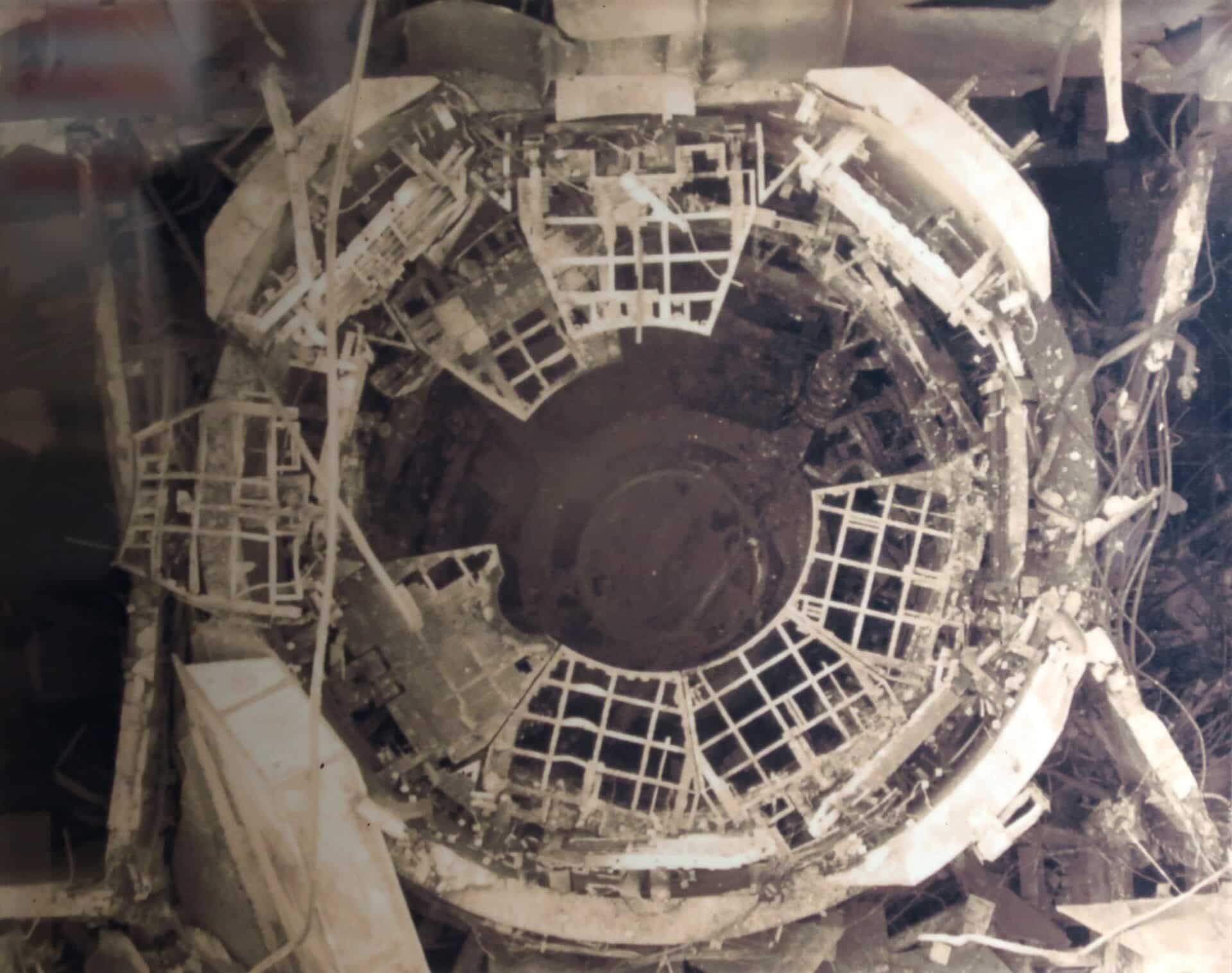
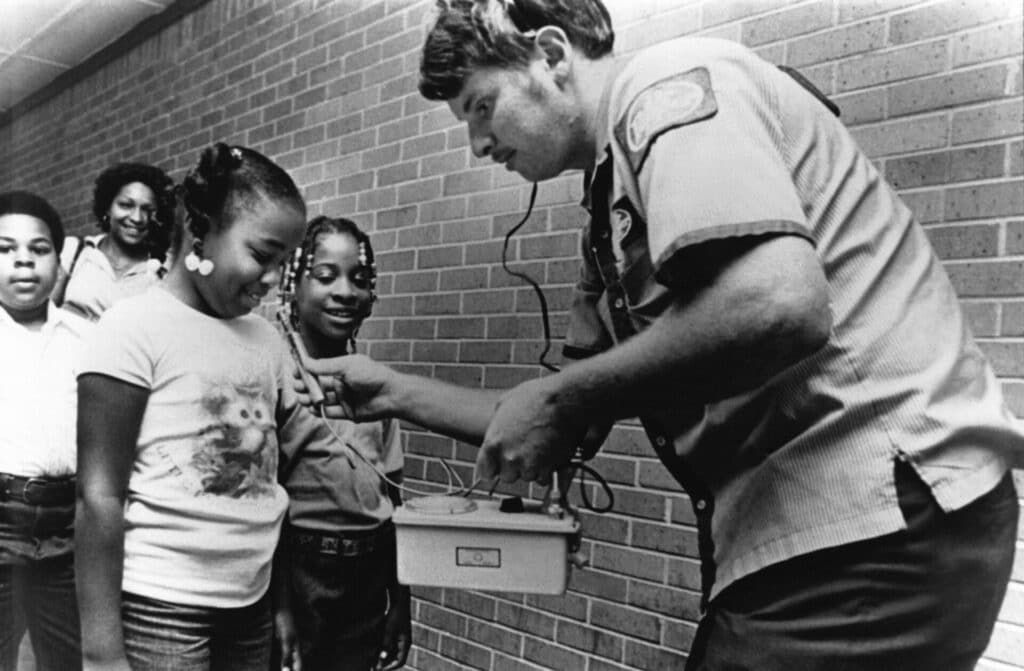
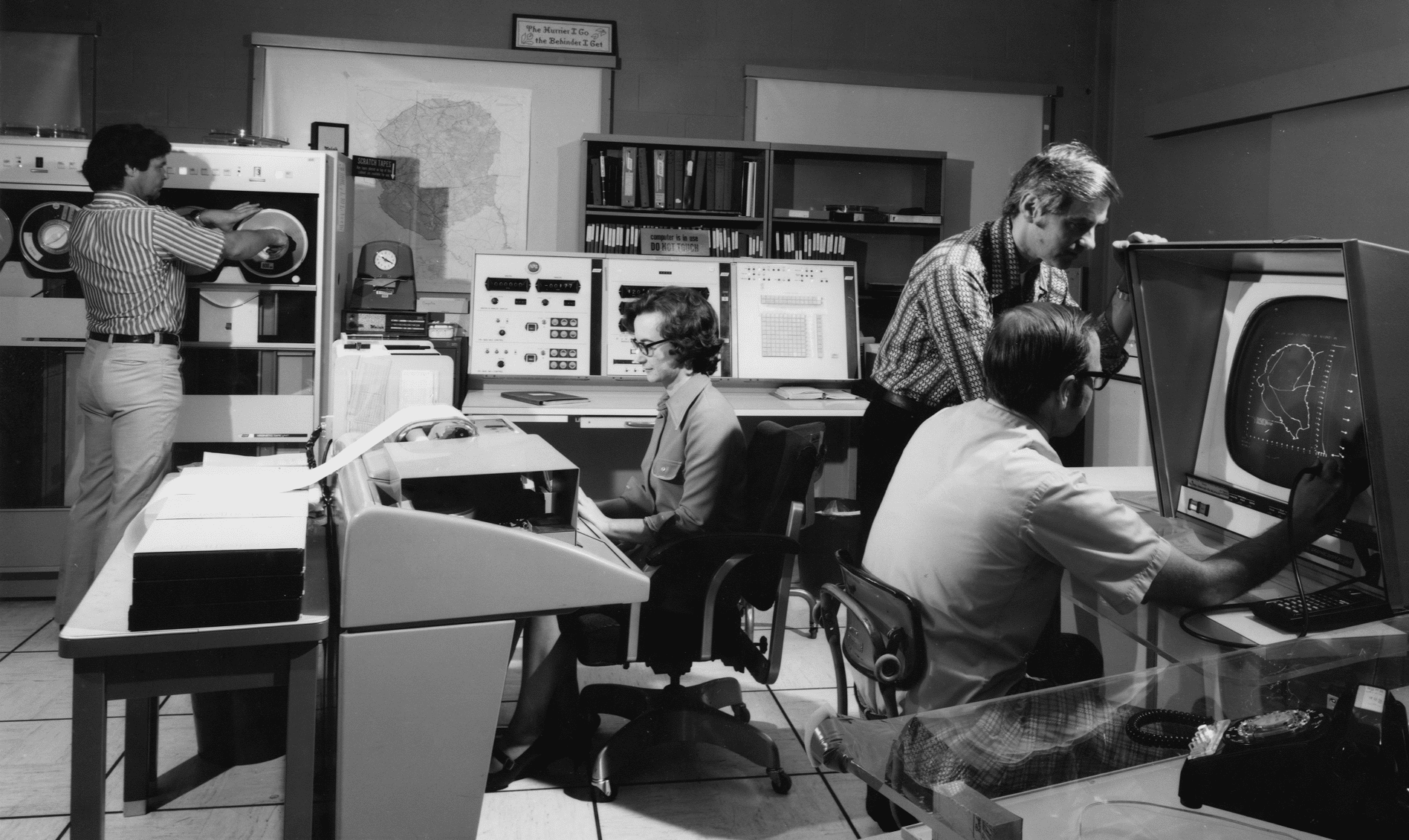
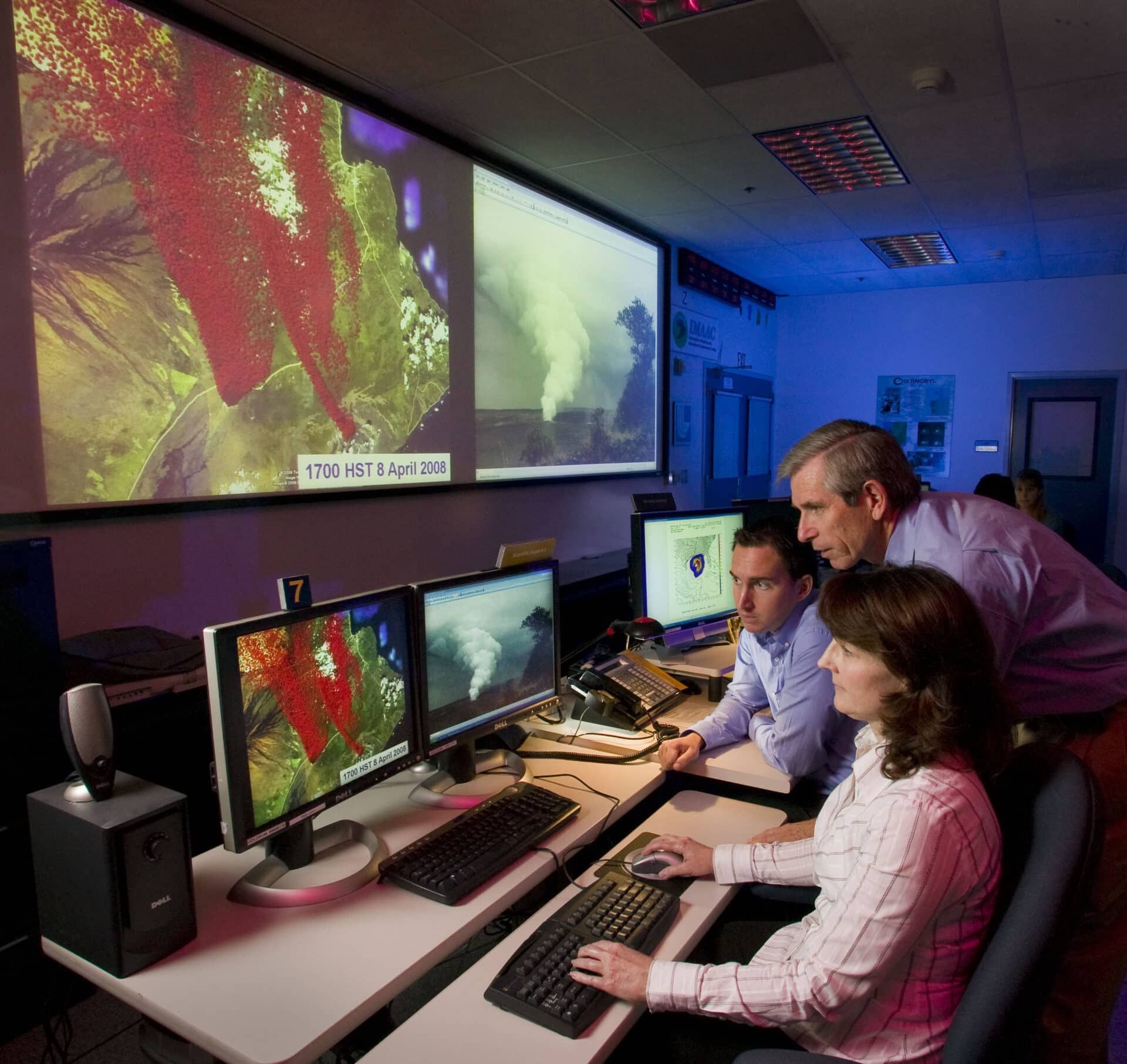
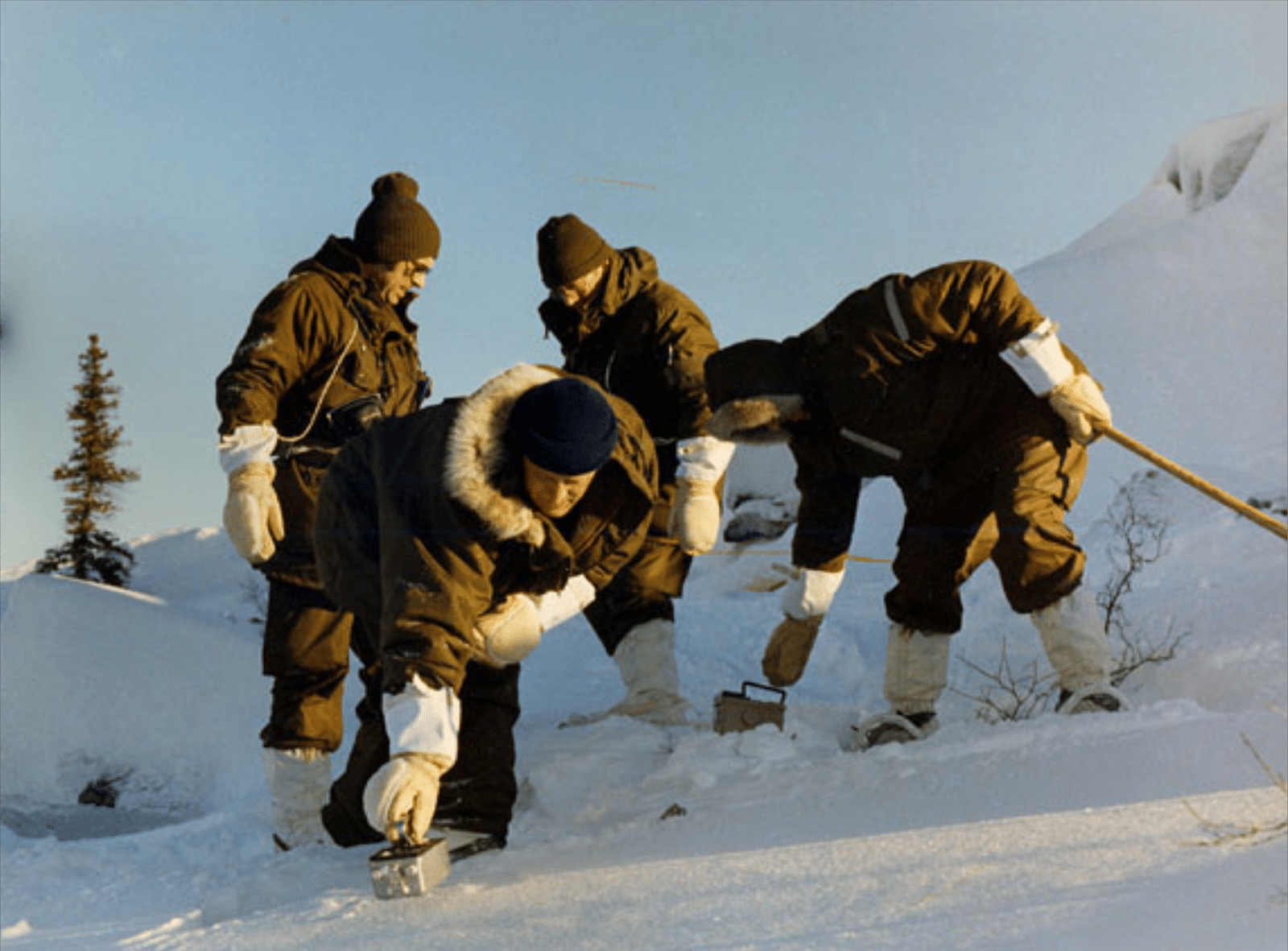
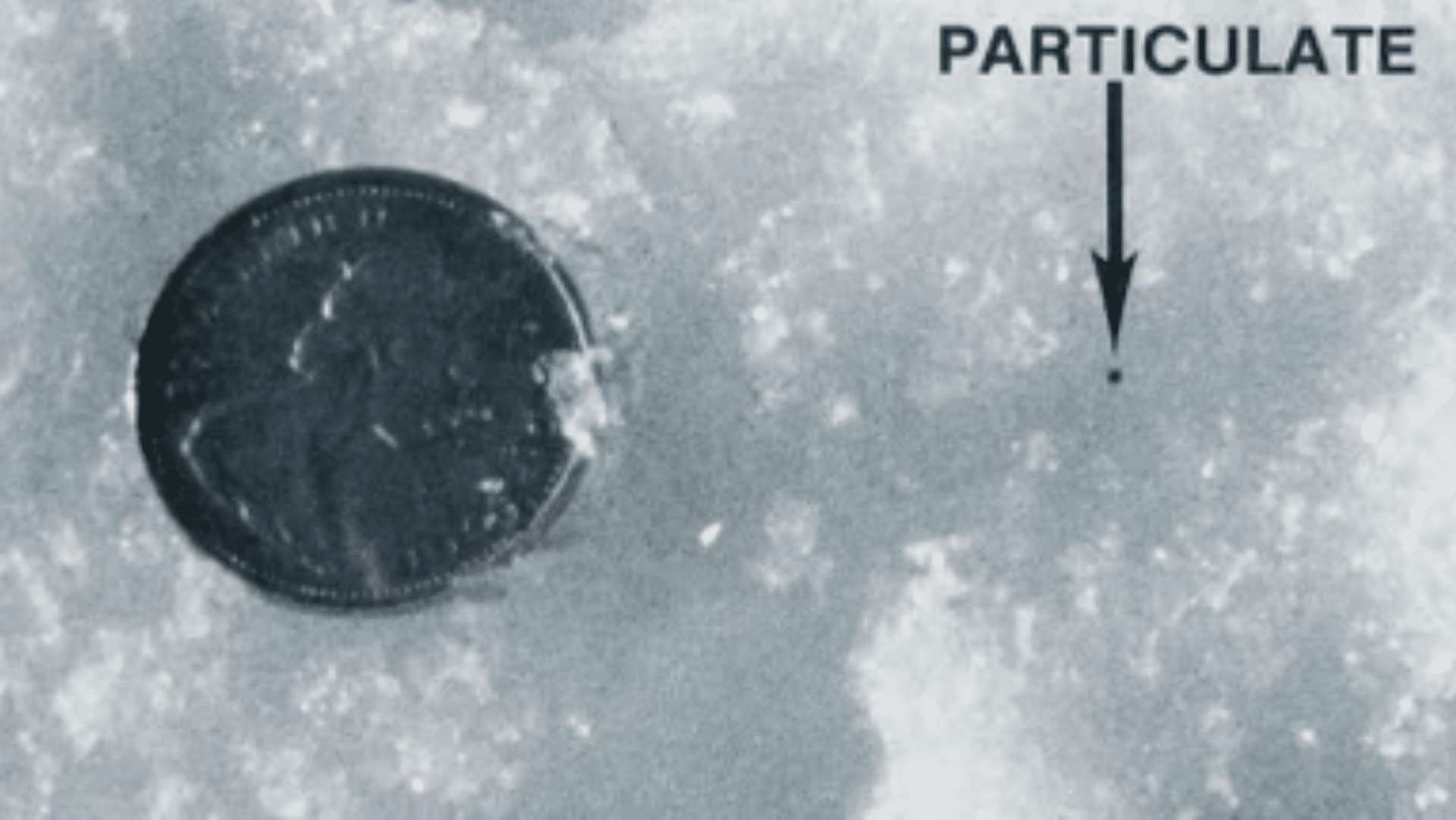
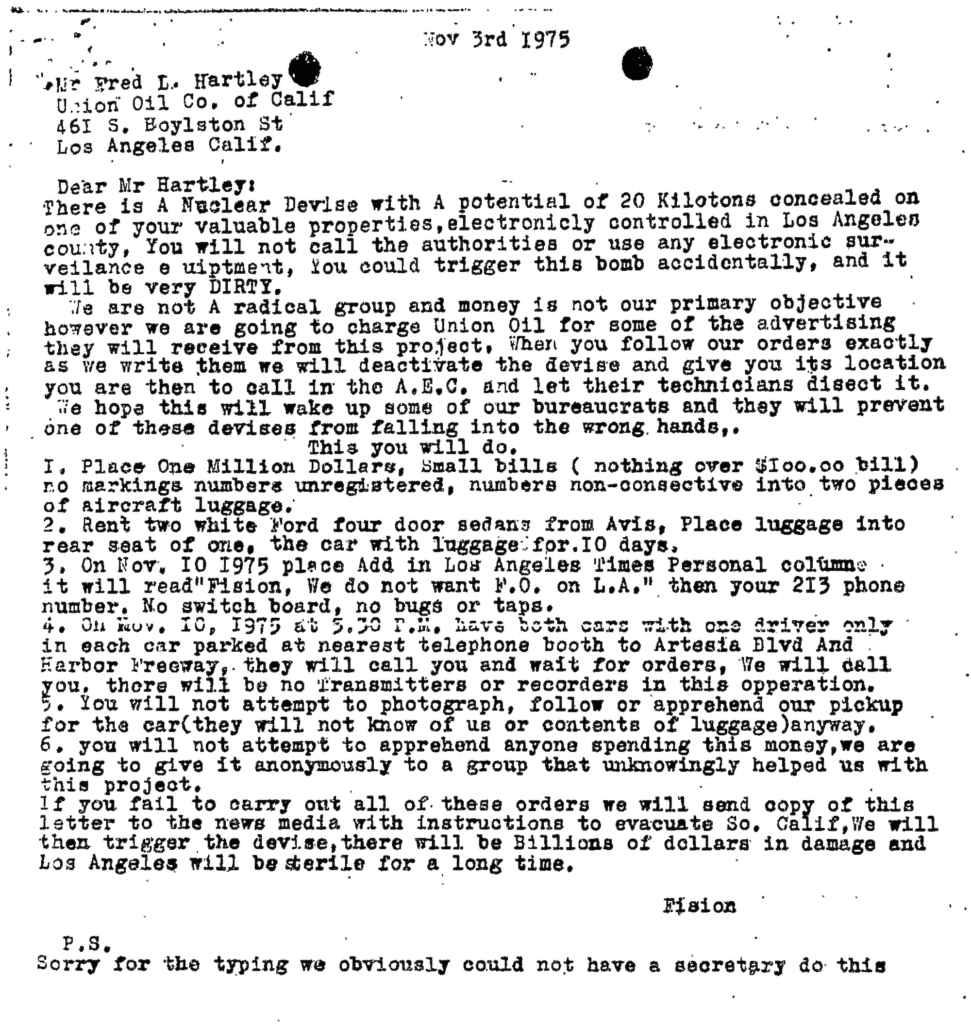
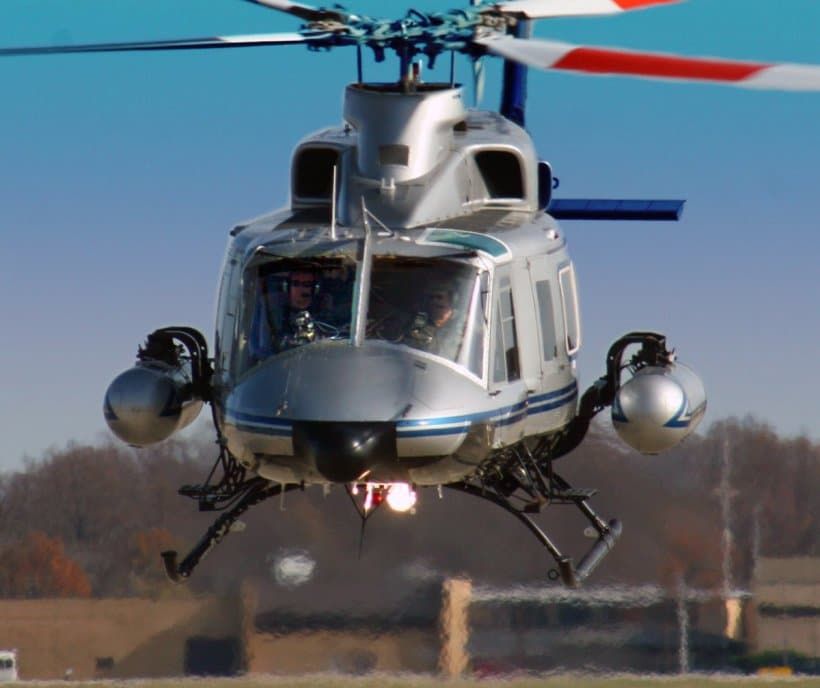
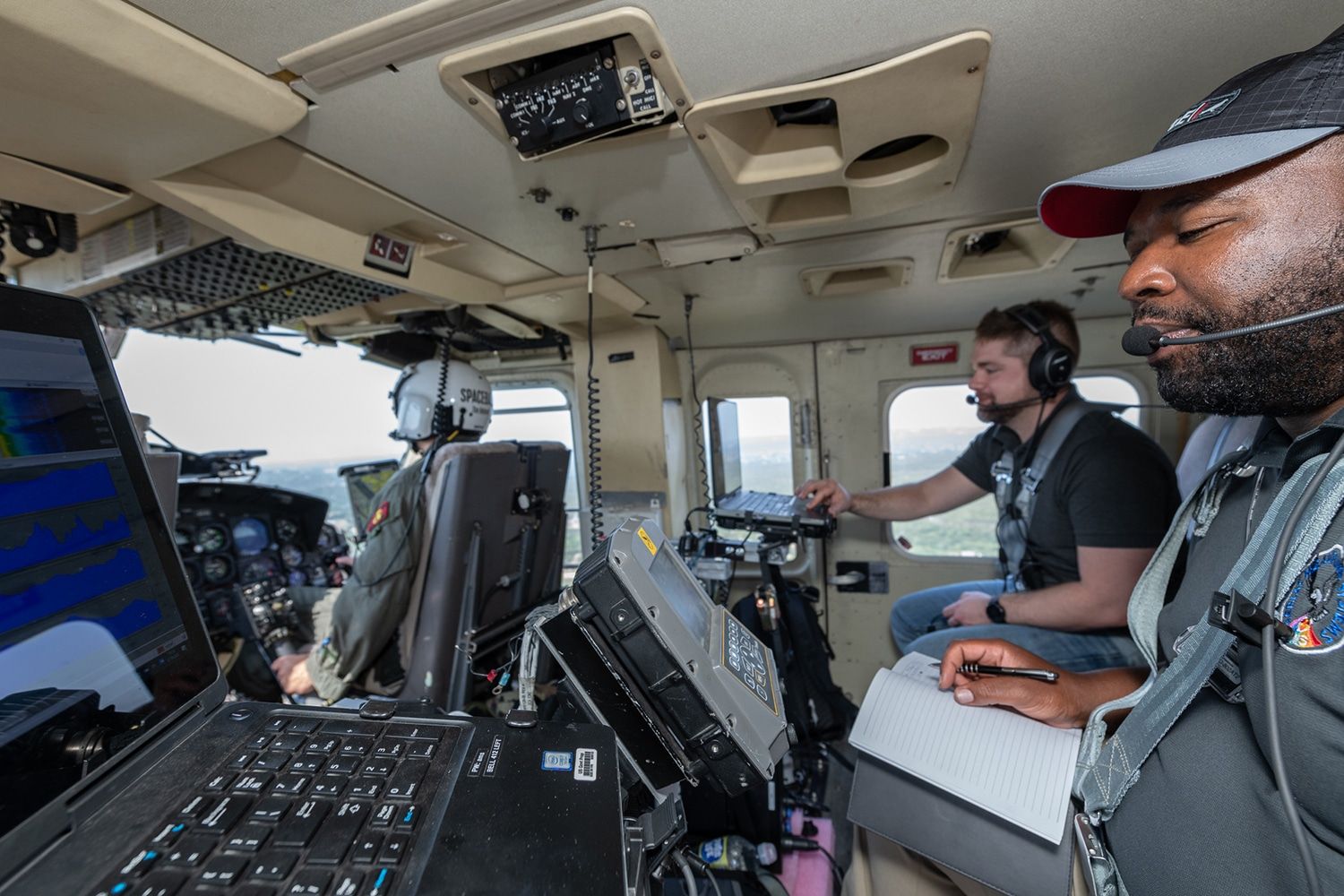

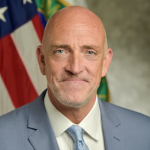

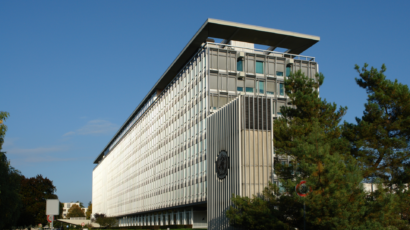
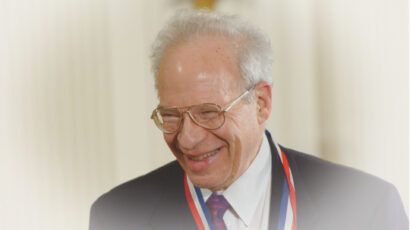
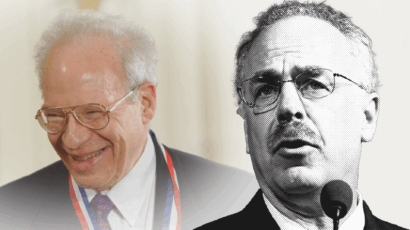
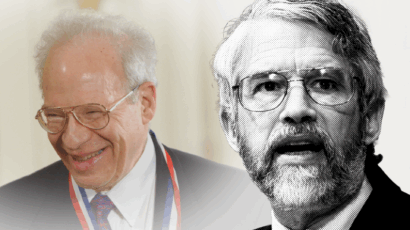
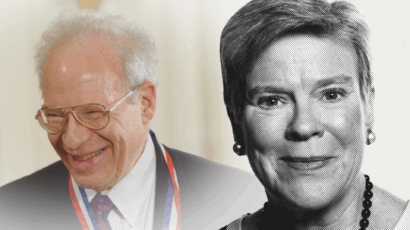
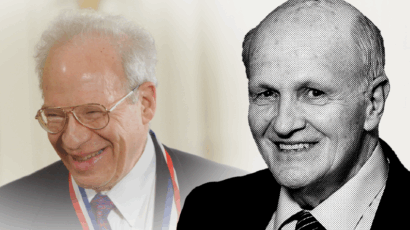
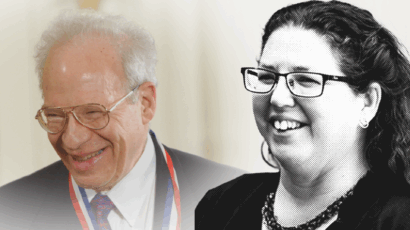
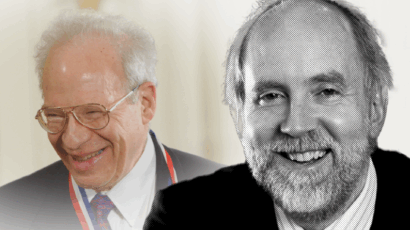
“After its attitude control system failed in January of the following year, the satellite began a terminal descent.”
Don’t tell my boss there is an attitude control system! He might want to use one on me!